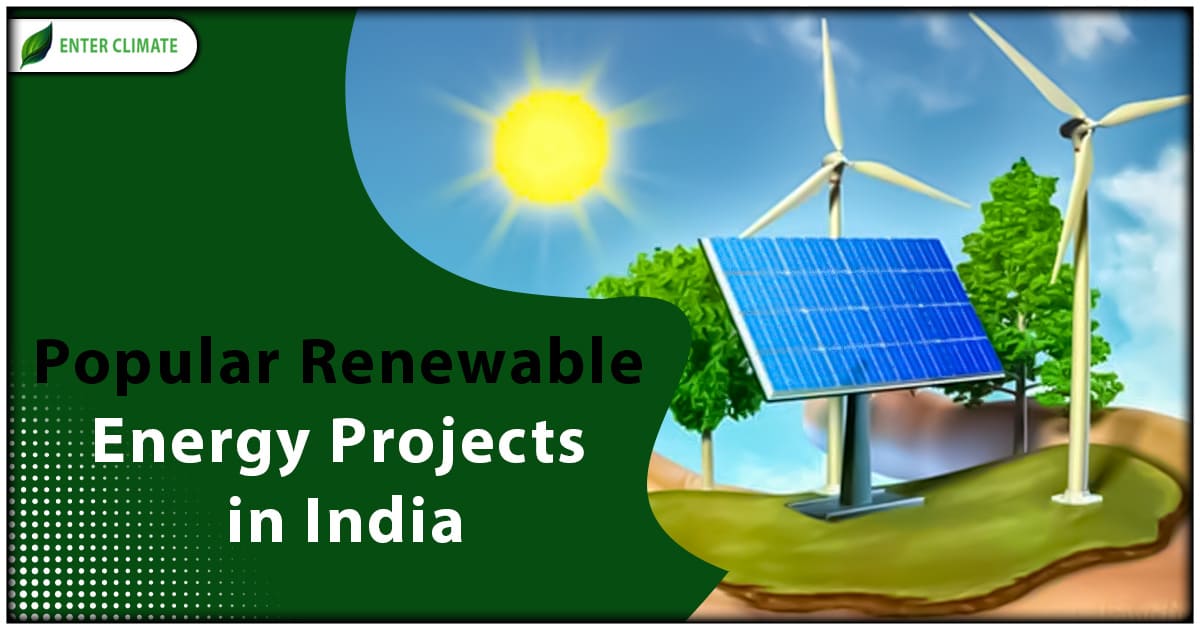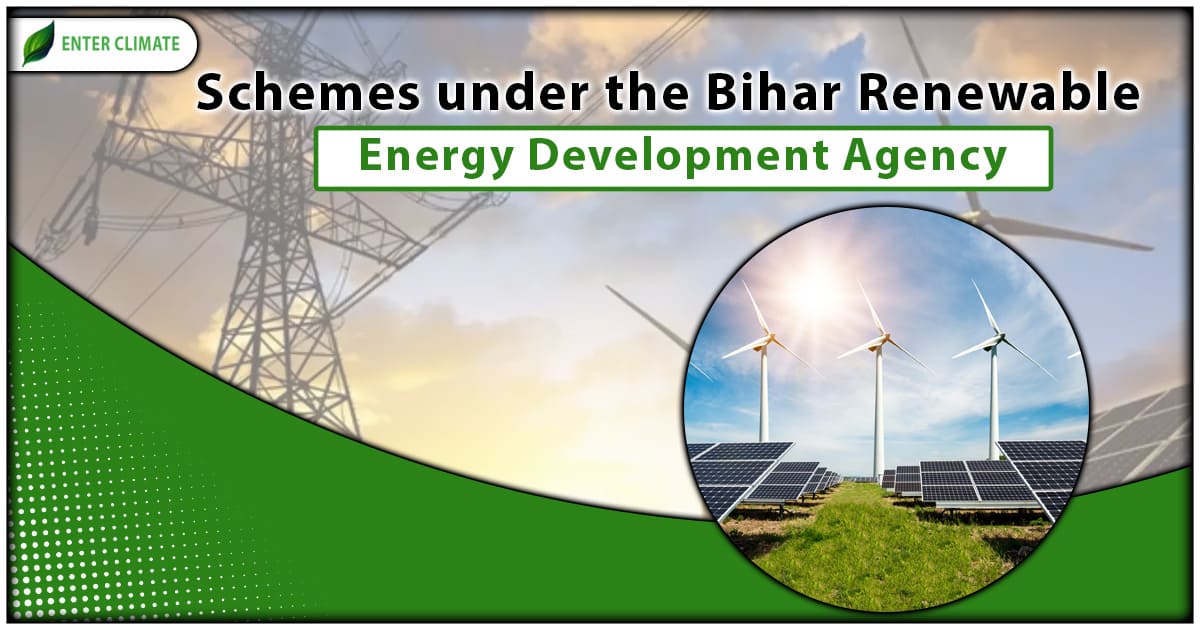Popular Renewable energy sources available in Rural India
 31 Jul, 2023
31 Jul, 2023 
India, known for its rapid economic growth and substantial manufacturing sector, possesses abundant renewable energy potential through solar, wind, and hydropower resources. Expediting the development of clean energy in India would improve access to affordable and reliable energy and lessen reliance on fossil fuel imports, thereby bolstering energy security amid the ongoing energy crisis. Though India has made commendable progress in enhancing energy efficiency and embracing renewable energy sources, achieving a decarbonized economy and reaching net-zero emissions by 2070 will necessitate a faster deployment of innovative technologies. Offshore wind and green hydrogen emerge as strategic opportunities to support India’s pursuit of clean energy goals. Adopting these technologies in the market would facilitate the transition to clean power generation and low-carbon industrial processes.
Scope of Renewable Energy Sources in Rural India
Recognizing the vital role of energy in rural development, the Government of India has implemented various initiatives to encourage a transition from fossil-based fuels, like kerosene and coal, to alternative sources. These efforts include offering significant subsidies and establishing extensive rural infrastructure. Additionally, the government has actively worked to improve bio-fuels[1] availability and introduced new renewable energy sources to cater to the energy needs of rural communities.
Renewable energy solutions for rural electrification have certain competitive advantages as follows:
- Long lifespans and low maintenance and operation costs.
- Minimal fuel expenses, especially as backup power sources.
- Environmentally friendly with minimal impacts on the environment and climate.
The key strength of renewable energy sources in Rural India are as follows
- The flexibility of off-grid systems powered by local resources
- Locally abundant resources like rivers, wind, biomass, and solar energy.
- Enables improved economic conditions in rural areas, making electricity more affordable for local communities.
Factors driving the viability of renewable energy for rural electrification are as follows:
- Technological advancements.
- Economies of scale.
- Maturation of the renewable energy industry.
- Decreasing costs of renewable technologies lead to greater cost competitiveness in rural electrification projects.
Anticipated future trends:
- Continued significant cost decline in energy production from renewable sources.
- Especially beneficial for developing and emerging countries’ rural areas.
- Off-grid systems use local resources to provide competitive electricity to areas with limited access.
Types of Renewable Energy Sources
The major types of renewable energy sources are as follows:
1. Bioenergy
Bioenergy refers to energy obtained by converting biomass feedstocks, which can be utilized directly as fuel or processed into liquids and gases. Biomass feedstocks encompass various materials such as plants and animals, wood, waste, gas, and alcohol fuels.
The selection of the specific bioenergy type and the type of biomass feedstock relies on several factors. These factors include the availability of sustainable feedstock, the economic and technical feasibility of using one technology over another, the presence of skilled personnel to manage the technology, local weather conditions, and establishing a sustainable business structure.
In rural areas, biogas finds diverse applications, including:
- Serving as a low-cost fuel for heating purposes, such as cooking.
- Providing lighting solutions.
- Powering heat engines to produce mechanical or electrical power.
- Being compressed, similar to natural gas, for use in motor vehicles.
- Utilizing bio-slurry, a byproduct of biogas production, as an excellent fertilizer.
2. Small hydropower
Hydropower is a energy source that harnesses the natural water cycle. The categorization of ‘small’ hydro lacks a universally agreed definition, but it is generally considered to be up to 10 MW, although some regions may use higher thresholds. Small hydro can be further divided into mini-hydro (under 1 MW), micro-hydro (less than 100 kW), and pico-hydro (less than 10 kW).
Being a well-established technology, hydropower generation offers reliability and cost-effectiveness in generating renewable power. However, it requires access to flowing water, making it site-specific. Despite this limitation, it is an exceptionally efficient, cost-competitive, and stable solution for electrifying rural areas.
3. Small wind turbines
Small wind refers to wind turbines with a capacity rating equal to or below 100 kW. The potential of wind energy experiences significant growth as wind speed increases. A doubling of wind speed results in an eightfold increase in energy content. Therefore, favourable natural conditions are crucial for the success of small wind energy solutions. When these conditions are met, small and medium wind turbines become highly cost-competitive options for off-grid applications in rural regions.
4. Solar photovoltaics (PV)
Photovoltaics, or solar cells, are electronic devices designed to convert sunlight into electricity directly. Solar energy is abundantly present globally and is vital in facilitating energy access in rural regions. It serves as a well-established and cost-competitive technology that continuously evolves and improves. Currently, a diverse array of PV cell technologies are available in the market, utilizing various materials and coming in different sizes.
5. Energy Storage
Energy storage refers to technologies that facilitate the retention of energy obtained from a primary source for future utilization. While batteries and other forms of energy storage do not directly provide access to electricity, they play a crucial role in ensuring the dependability of electricity systems by storing surplus energy for use during times of fluctuating production. As a result, they are indispensable for maintaining stability in rural electrification projects that rely on renewable energy sources like wind and solar power.
Data on Renewable Energy Sources
India’s remarkable accomplishments in Renewable energy sources developments are as follows:
- Over 4200 MW of grid power is generated from wind, small hydro, biomass, and solar energy.
- Electrification of 3600 remote villages/hamlets, including those in Sundarbans (West Bengal), Ladakh, and the North East, using solar energy.
- Establishment of the most extensive solar-steam cooking system, catering to 15,000 persons per day, at Tirupati Tirumala Devasthanam.
- Installation of 7 lakh square meters of collector area solar water heating systems.
- Implementation of 3.5 million biogas plants for cooking and lighting purposes.
- Distribution of 35 million improved wood stoves in rural households.
- Successful implementation of the Integrated Rural Energy Program in 860 blocks.
- Export of 30 MW capacity of Solar Photovoltaic products to various developed and developing countries.
- Provision of Rs. 25,000 million in direct subsidies to beneficiaries/users of renewable energy systems and devices, including subsidies for grid-connected renewable power projects.
- Establishment of the Centre for Wind Energy Technology as a scientific and industrial research organization for wind resource assessment, equipment certification, and R&D in Chennai, Tamil Nadu.
Legalities involved in Starting a Business based on
Various renewable energy sector necessitates specific documents according to their needs. Below mentioned are the common documents that are required:
- Company Incorporation: Legal document establishing the company’s existence as a separate legal entity.
- Articles of Association: Document outlining the internal rules and regulations for the company’s operation.
- Memorandum of Association: Document that sets out the company’s constitution and scope of activities.
- GST Registration: Registration under the Goods and Services Tax for tax compliance.
- Trademark Registration: Protection of the company’s brand identity and Intellectual Property (IP).
- MSME Registration: Registration under the Micro, Small, and Medium Enterprises Act for availing benefits.
- Shop and Establishment license: License permitting the business to operate in a particular location.
- Pollution NOC: No Objection Certificate indicating compliance with environmental regulations.
- Permanent Account Number (PAN): Unique identification number for tax purposes.
- Tax Deduction and Collection Account Number (TAN): Number for tax deduction and collection at source.
- Bank Account details: Information about the company’s bank account for financial transactions.
- Loan Documents: Documents related to loans taken for business operations.
- CEIG Approval: Approval from the Chief Electrical Inspector to Government (India) for electrical installations.
Conclusion
India holds a prominent position in the global energy economy, with energy consumption more than doubling since 2000 due to a rapidly growing population and a period of robust economic growth. Notably, in 2019, near-universal household access to electricity was achieved, providing over 900 million citizens with electrical connections in less than two decades.Looking ahead, India’s ongoing industrialization and urbanization will place substantial demands on its energy sector and policymakers. Despite the significant progress, per capita energy use in India remains well below the global average, and disparities in energy consumption and service quality persist between states and rural and urban areas. Ensuring affordability and reliability of energy supply are crucial priorities for India’s consumers, which must be considered by the service providers. Therefore, it is recommended to take expert consultation to set up any business on renewable energy sources to ensure the business plan, documents and licenses that would be required for setting up the business.
FAQs
In Indian villages, a prevalent energy source is obtained from burning wood and animal dung, resulting in the formation of biogas.
In rural regions, cooking primarily relies on wood and animal dung as the primary energy sources. These options are easily accessible and cost-effective. However, solar energy is not widely utilized due to the challenges in harnessing it effectively, and coal is not considered cost-efficient for these areas.
Thermal power holds a prominent position as the “primary” power source in India. Various types of thermal power plants utilize different fuels, including coal, gas, diesel, and natural gas, to generate steam. Approximately 71% of India’s electricity consumption is derived from thermal power plants.
As a tropical country, India receives ample sunlight all year round, making it a perfect location for capturing solar energy. The vast open spaces in rural and remote areas offer excellent opportunities for installing solar panels and generating electricity.
Tata Power Solar Systems holds the top position among renewable energy companies in India, primarily focusing on operations within the wind and solar sectors.
At present, biomass fulfils approximately 70% of the fundamental energy requirements in rural areas, supporting nearly 70% of India’s population.
The prevalent energy sources in Indian villages are wood and cow dung, which are burned to produce biogas.
Solar energy, bio-gas and firewood can be used as sources of energy in rural areas.
Common energy source in Indian villages is wood and cow dung, which is burnt to form biogas.
Villagers primarily rely on biomass fuels such as wood, animal dung, and agricultural residues to meet their cooking energy needs. These fuels are often burned using inefficient, traditional cookstoves.
Read our Article: How Are Renewable Energy Companies And Startups Building A Greener India?
Categories
Latest Post
Air pollution Dispersion Modeling
Natural Disaster Risk Assessment
Endangered Species Protection
Aquifer Recharge Project
Sustainable Sanitation Solutions














